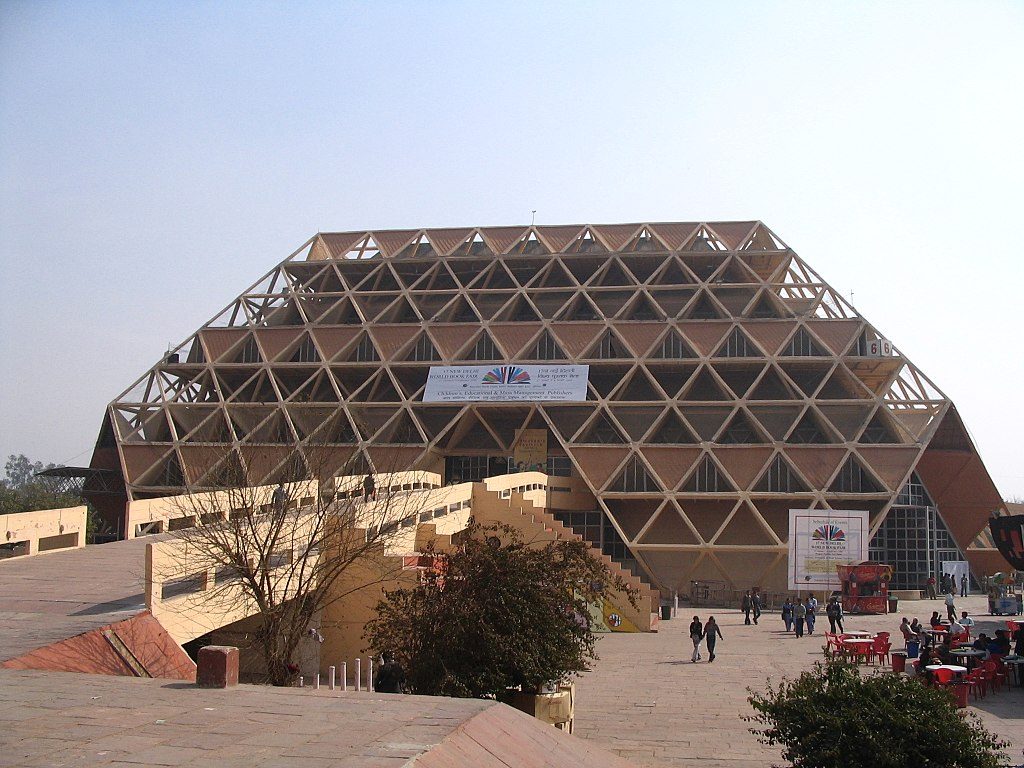“The Delhi High Court’s decision held that destruction of a work does not constitute an infringement of the special rights of an author under section 57 of the Indian Copyright Act and underscores the need to have clear statutory rules on the scope of moral rights in architectural as well as artistic works in India.”
 Does an architect, as author of an artistic work in the form of a building covered by copyright, have a right to restrain the owner of the land to demolish the building and construct another in its place? The Delhi High Court of India recently answered this firmly in the negative in the case of Raj Rewal v. Union Of India and Ors.
Does an architect, as author of an artistic work in the form of a building covered by copyright, have a right to restrain the owner of the land to demolish the building and construct another in its place? The Delhi High Court of India recently answered this firmly in the negative in the case of Raj Rewal v. Union Of India and Ors.
The Delhi Court’s judgment gave preference to requirements of urban planning over the moral rights of an architect. It held that the owner of the building has full power to dispose of or destroy it. The judgment is significant in its contribution to the jurisprudence on the scope and limitations of “moral rights” in Indian Copyright Law.
The Raj Rewal Case
The Hall of Nations building was designed by the plaintiff Raj Rewal, an acclaimed architect, and structural designer Mahendra Raj. The building stood tall in the grounds of Pragati Maidan in New Delhi and the architectural ingenuity of these buildings gained the unique distinction of being the first “Large Span Concrete Structure” in the world. In 2016, the Indian Trade Promotion Organisation (ITPO) proposed to destroy the Hall of Nations complex in order to build an “Integrated Exhibition-cum-Convention Centre.”
After several failed interventions by the plaintiff before administrative and judicial bodies, the building was demolished. Consequently, the plaintiff instituted a suit in the Delhi High Court against the actions of the ITPO, claiming violation of the special rights of an author under Section 57 of the Indian Copyright Act and asked for a mandatory injunction to reestablish the building as per the original plans.
Special Rights of an Author Under Indian Copyright Act
Section 57 of the Indian Copyright Act protects the author’s rights of ownership and integrity. Any kind of distortion, mutilation or modification, if established to be prejudicial to the author’s reputation or honor, are actionable and the plaintiff has the right to restrain the activity or claim damages.
However, the Delhi High Court rejected the plaintiff’s contentions that his moral rights under section 57 were abrogated by the owner of the land. The court held that the plaintiff’s rights under section 57 were statutory in nature, provided by the Indian Copyright Act being expropriatory legislation, whereas the Right to Property was a constitutional right under Article 300-A of the Indian Constitution. Article 300-A mandates that “no person shall be deprived of his property save by authority of law, no law unless expressly providing for deprivation of property can, by implication be interpreted as depriving a person of his property.” As a result, constitutional rights should always prevail over statutory rights.
The court observed that the language of Section 57(1)(b) of the Indian Copyright Act establishes the principle that the work should not be rendered imperfect, as this would affect the honor and reputation of the architect. Therefore, failure to display a work is not infringement of rights under Section 57 because “what cannot be viewed, seen, heard or felt, cannot be imperfect and cannot affect the honour or reputation of the author.” Further, destruction of the work in its entirety, i.e making it disappear, cannot be prejudicial to the reputation of an author due to lack of imperfections in it. The court said: “I like or dislike only a building/structure which I see. What I don’t see, I don’t judge. When a building is not seen, the question of forming any opinion of the architect does not arise.”
Honourable Mr. Justice Rajiv Sahai EndLaw further relied upon Section 52(1)(x) which provides an exception to copyright, namely, “the reconstruction of a building or structure in accordance with the architectural drawings or plans by reference to which the building or structure was originally constructed.” This section says that such reconstruction of a building is not an infringement of copyright. If the demolition of the building is prohibited under Section 57(1)(b), then Section 52(1)(x) would become redundant in nature. It is settled principle of law that “no part of the statute should be read in a manner so as to render another part thereof redundant or otiose.” Therefore, said the court, Section 57 of the Act could not possibly contemplate the right to object to the destruction of the building.
The court thus rejected the plaintiff’s claim for interim relief and held that the interest of the claimants in preserving the integrity of the work had to be balanced against the interests of the owners of the building and, as a result, the right of the owner of the building must override the right of the intellectual property owner.
Impact on Moral Rights Jurisprudence in India
The court’s decision held in broader terms that destruction of a work does not constitute an infringement of the special rights of an author under section 57 of the Indian Copyright Act. However, it restricts the scope of moral rights provided under Section 57 and underscores the need to have clear statutory rules on the scope of moral rights in architectural as well as artistic works in India. India must adopt rules similar to the Copyright Amendment (Moral Rights) Act, 2000 of Australia, where building owners must in good faith consult with the architect or author of a work and give notice prior to modification or demolition. Such legislative change would help to preserve historical and cultural heritage. Until such landmark change is made, authors and architects have little means to preserve the integrity of their works.
Image Source: Wikipedia
Permission Details: GFDL and CC-BY-SA

![[IPWatchdog Logo]](https://ipwatchdog.com/wp-content/themes/IPWatchdog%20-%202023/assets/images/temp/logo-small@2x.png)

![[Advertisement]](https://ipwatchdog.com/wp-content/uploads/2024/04/Patent-Litigation-Masters-2024-sidebar-700x500-1.jpg)

![[Advertisement]](https://ipwatchdog.com/wp-content/uploads/2021/12/WEBINAR-336-x-280-px.png)
![[Advertisement]](https://ipwatchdog.com/wp-content/uploads/2021/12/2021-Patent-Practice-on-Demand-recorded-Feb-2021-336-x-280.jpg)
![[Advertisement]](https://ipwatchdog.com/wp-content/uploads/2021/12/Ad-4-The-Invent-Patent-System™.png)






Join the Discussion
No comments yet.